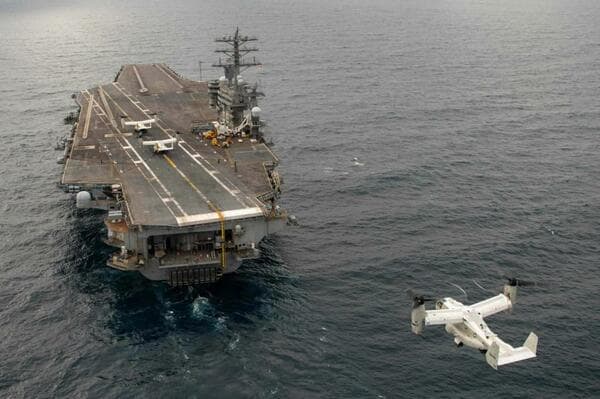
Chinese aircraft carriers: China is no match for the US
– China’s number of landings and takeoffs is 1/4 of that of US aircraft carriers
– China is testing electromagnetic catapults
Summary from JBpress article.
Chinese Navy aircraft carrier training: “Shandong” task force
This year, for 10 days from July 9th to 18th.
The “Shandong” strike group conducted mobile deployment training in the Western Pacific.
Japan Self-Defense Forces: Joint Staff Office
1. Maritime Self-Defense Force escort ships conducted surveillance and information gathering of the activities.
2. Air Self-Defense Force fighter jets responded to the carrier-based fighter jets with emergency takeoff.
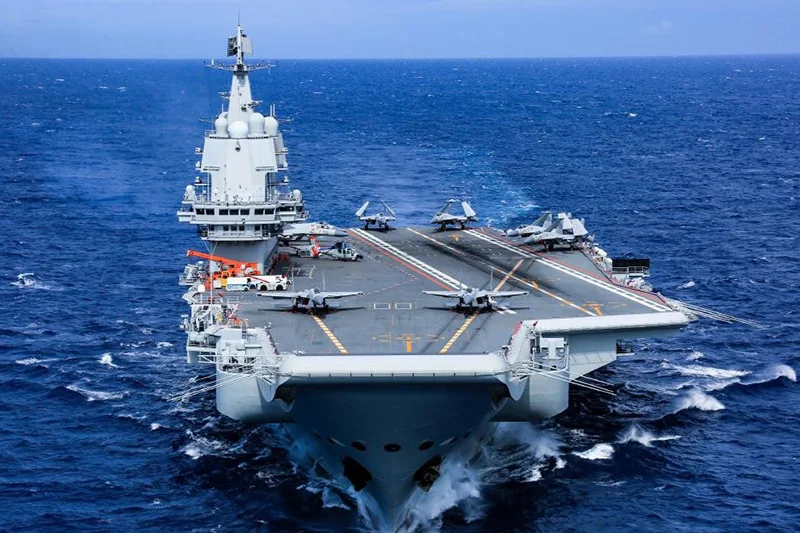
Analysis of surveillance information:
It was found that there is a large disparity in military power between US and Chinese aircraft carriers.
Number of takeoffs and landings of the aircraft carrier Shandong: July 9-18, 2024
During the training period, we investigated the number of takeoffs and landings of carrier-based fighter jets and helicopters on the Chinese Navy’s aircraft carrier Shandong.
From July 9 to 18,
1. The number of takeoffs and landings of the aircraft carrier Shandong was 420 in total.
2. The number of fighter sorties was 260 in total, an average of 28.8 per day.
Number of takeoffs and landings of the aircraft carrier Shandong: October and November 2023
In October and November last year, the Shandong aircraft carrier strike group was deployed to the Western Pacific Ocean.
1. Over the 12 days of training, the number of fighter sorties was 420 in total.
2. The number of fighter sorties was an average of 35 per day.
Carrier-based fighter jets from the Shandong aircraft carrier:
The number of sorties per day is about 30 to 40 on average.
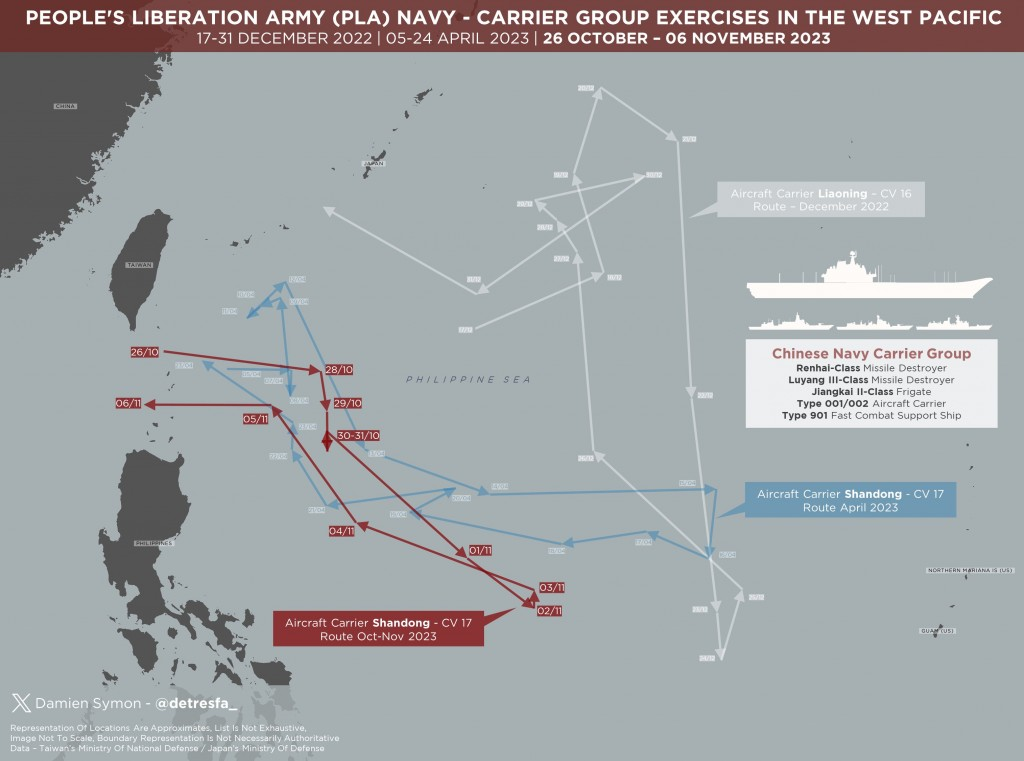
Number of takeoffs and landings of the aircraft carrier Shandong: October and November 2023
In October and November last year, the Shandong aircraft carrier strike group was deployed to the Western Pacific Ocean.
1. Over the 12 days of training, the number of fighter sorties was 420 in total.
2. The number of fighter sorties was an average of 35 per day.
Carrier-based fighter jets from the Shandong aircraft carrier:
The number of sorties per day is about 30 to 40 on average.
Number of sorties per day by US aircraft carriers:
On the other hand, the number of sorties per day by the Nimitz-class US aircraft carriers is about 120.
Disparity in military power between US and Chinese aircraft carriers:
The true value of an aircraft carrier depends on the attacking capabilities of its aircraft.
1. The disparity in military power between the US and China is clear even when looking at the number of sorties per day alone.
2. US aircraft carriers have a mobility ratio of “3:1” or “4:1”.
Comparing the capabilities of US and Chinese aircraft carriers:
There is still a large disparity in military power between US and Chinese aircraft carriers.
Comparing the key points of the capabilities of US and Chinese aircraft carriers.
Number and specifications of US aircraft carriers:
The US Navy currently has:
1. 10 Nimitz-class ships,
2. China has one Gerald Ford-class,
a total of 11 aircraft carriers.
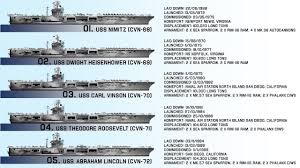
Specifications of the 10 Nimitz-class ships:
The Nimitz-class has a displacement of over 74,000 tons.
1. It is nuclear-powered (equipped with two nuclear reactors) and uses a steam catapult.
2. It can carry about 70 aircraft (maximum 90).
Specifications of one Gerald Ford-class ship:
The Gerald Ford-class is even larger, with a displacement of over 100,000 tons.
1. It uses an electromagnetic catapult that can rapidly accelerate to over 200 km/h.
2. It can carry more than 75 aircraft.
Specifications of the Chinese aircraft carriers “Liaoning” and “Shandong”:
The Chinese Navy currently has two aircraft carriers, the “Liaoning” and “Shandong”.
The third ship, the “Fujian”, is currently under construction.
Specifications of the Liaoning:
The Liaoning is a modified version of the former Soviet aircraft carrier Varyag.
It has a displacement of over 58,000 tons and is propelled by a diesel engine.
1. It uses a ski-jump type catapult.
2. It can carry 24 aircraft (J-15).
Specifications of the Shandong:
The Shandong is China’s first domestically produced aircraft carrier.
It has a displacement of over 66,000 tons and is propelled by a diesel engine.
1. It uses a ski-jump type catapult.
2. It can carry 36 aircraft.
China’s third aircraft carrier: Fujian
China has built the Fujian as its third aircraft carrier.
It was launched in Shanghai in June 2022 and made its first test voyage in May 2024.
The Fujian’s test voyage will take at least one year.
Fujian specifications:
The Fujian has a displacement of 80,000 tons and is equipped with an electromagnetic catapult.
1. It can operate J-15 and KJ-600 fixed-wing early warning aircraft.
2. It is said that it can carry 60 to 70 aircraft.
China has plans to build a nuclear aircraft carrier. However, it will take 10 years.
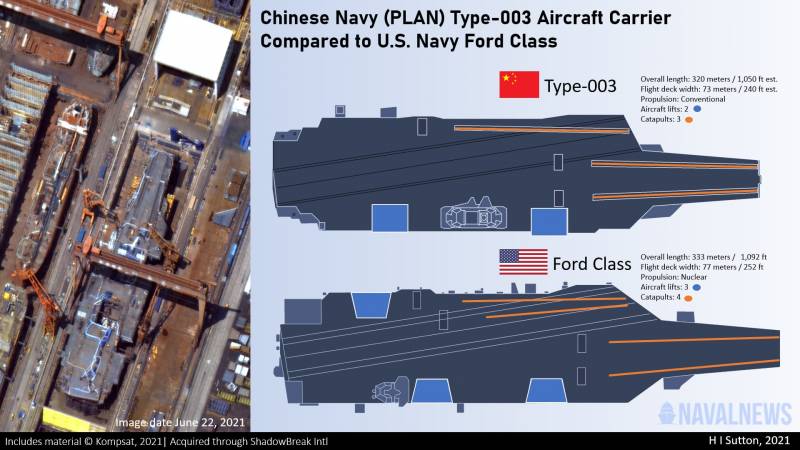
Comparison of US and Chinese operations and combat power:
1. Maximum takeoff weight of aircraft
The Nimitz-class has a maximum takeoff weight of 45 tons, while the Shandong has a maximum takeoff weight of 28 tons.
The Shandong’s maximum takeoff weight is 40% less than the Nimitz-class.
It has less fuel and armaments, a shorter operational radius, and reduced combat power.
2. Carrying early warning and electronic warfare aircraft
It is difficult for the Liaoning and Shandong to carry early warning and electronic warfare aircraft.
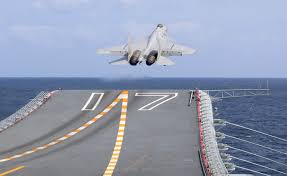
3. Number of sorties per day
The Nimitz class is about 120, while the Shandong is 30-40, so there is a big difference.
4. Need for refueling
The nuclear-powered Nimitz class can sail for several years without refueling.
The diesel-powered Shandong can sail for 15 days on its own fuel.
5. Number of aircraft carriers owned by the US and China
The US has 11 aircraft carriers, while China has only three, including those under construction.
There is a big gap between the US and China in terms of displacement, power source, number of aircraft on board, etc.
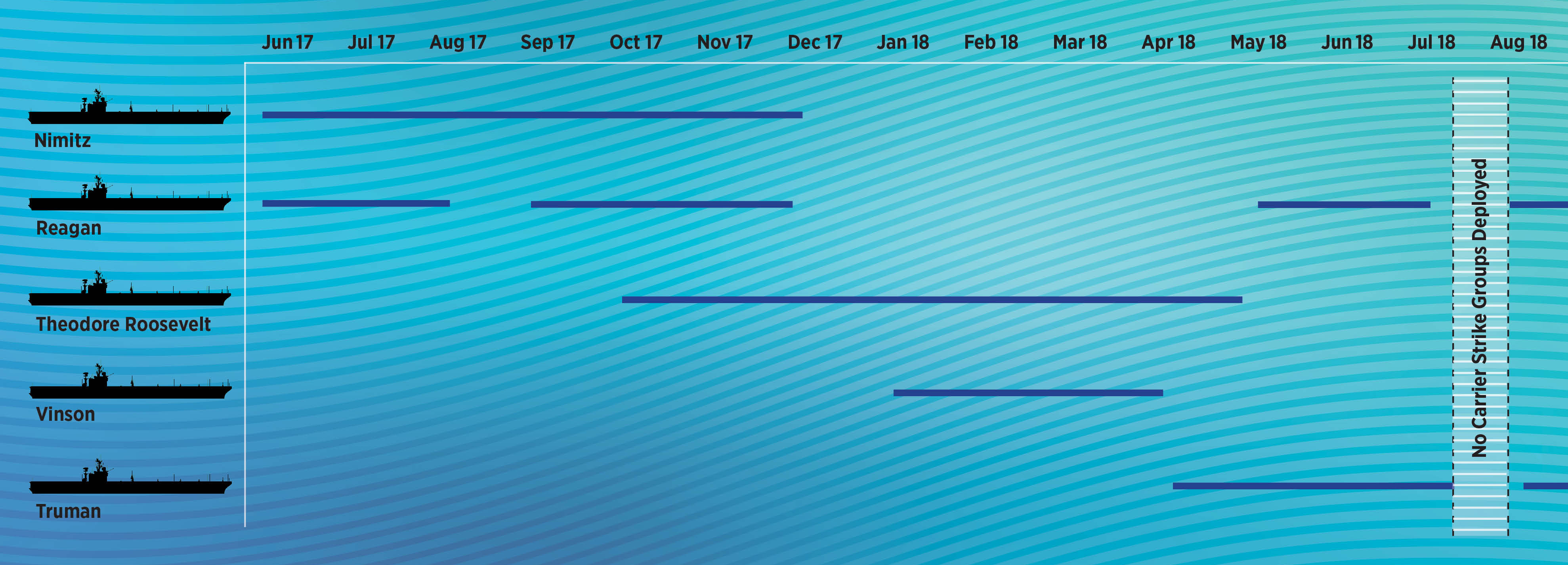
Latest deployment status of US Navy ships:
US Naval Institute (USNI): (July 8)
Aircraft carrier “George Washington”:
Currently sailing in the Pacific Ocean to its home port in Yokosuka, Japan.
Aircraft carrier “Carl Vinson”:
Currently participating in the Rim of the Pacific Exercise (RIMPAC2024, June 27-August 2, 2024).
Aircraft carrier “Ronald Reagan”:
The Nimitz is operating in the northwest Pacific in the area of the 3rd Fleet in the eastern Pacific.
Aircraft carrier “Dwight D. Eisenhower”:
In Europe, the carrier strike group is operating in the Mediterranean.
Navy operational common sense:
Currently, China can only assign one of its three aircraft carriers to actual missions.
Moreover, the Chinese Navy’s aircraft carriers have no combat experience.
In the western Pacific and the eastern and South China Seas, they have not gone beyond operational tests and training.
https://jbpress.ismedia.jp/articles/-/82166
i